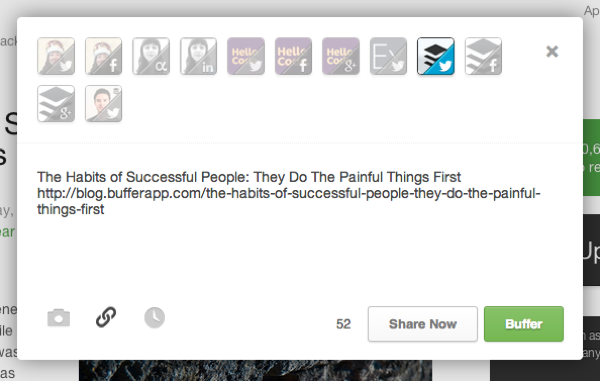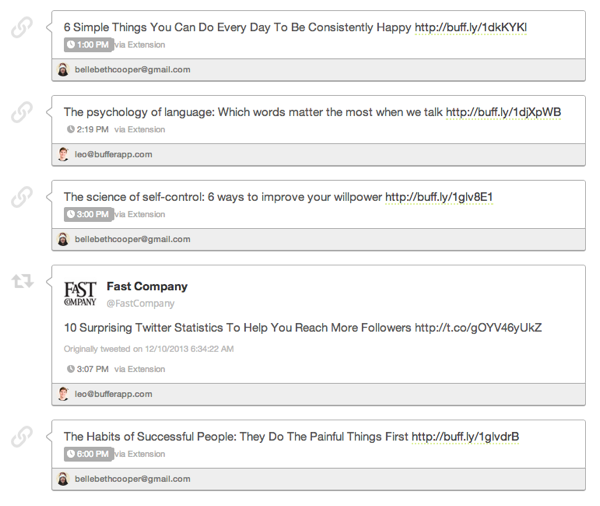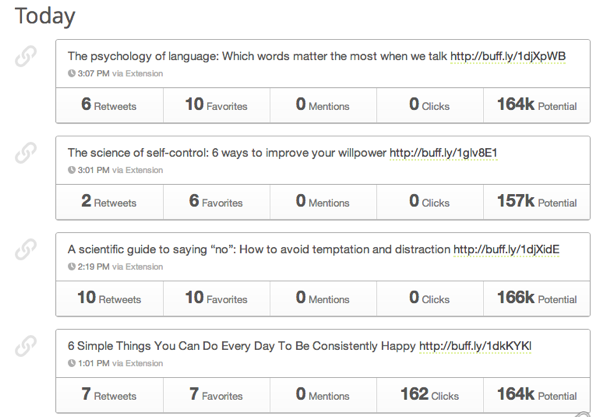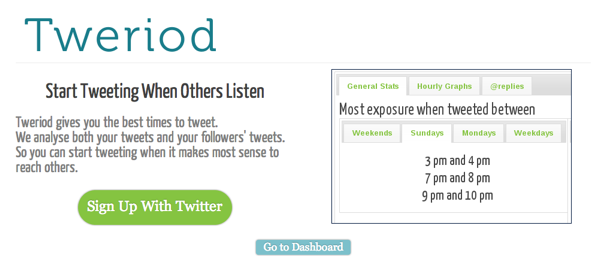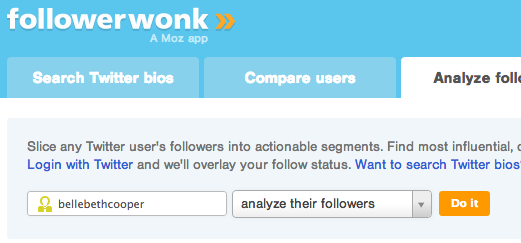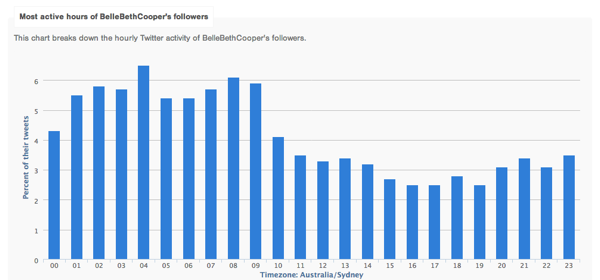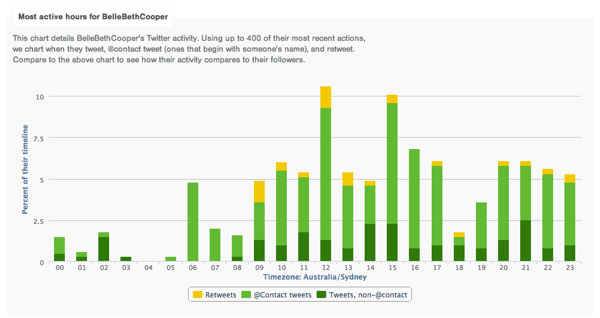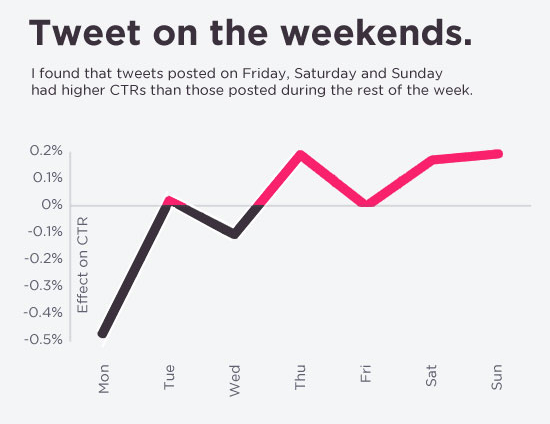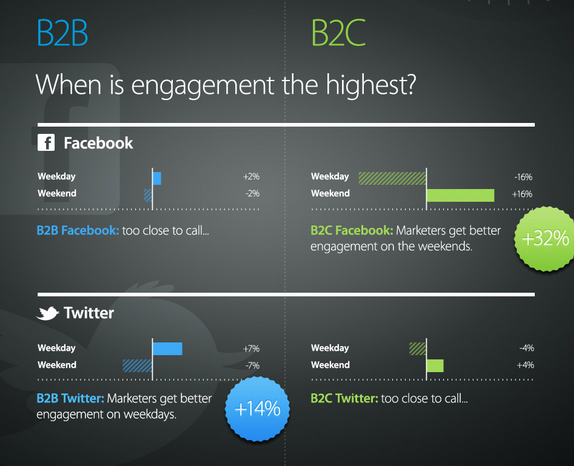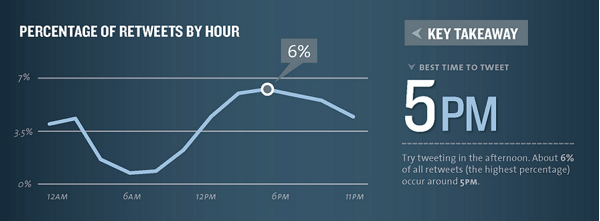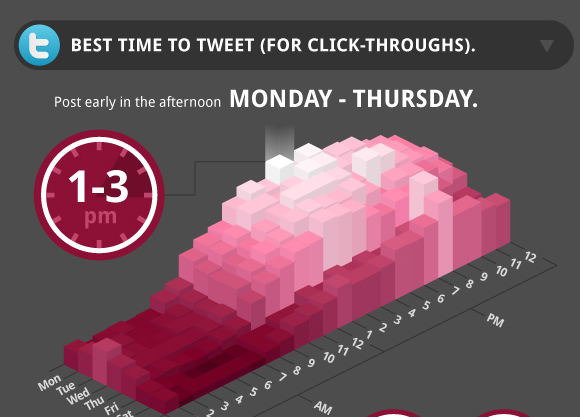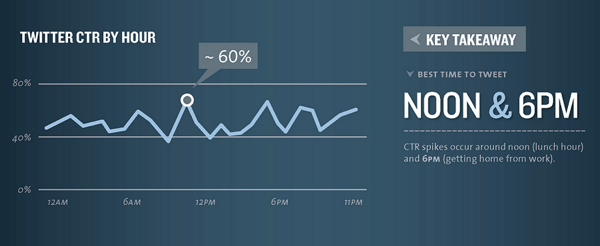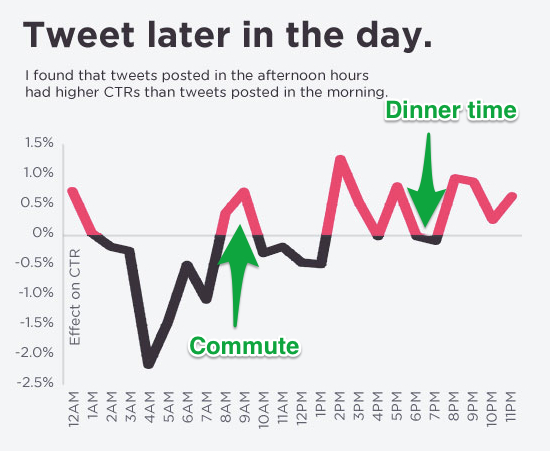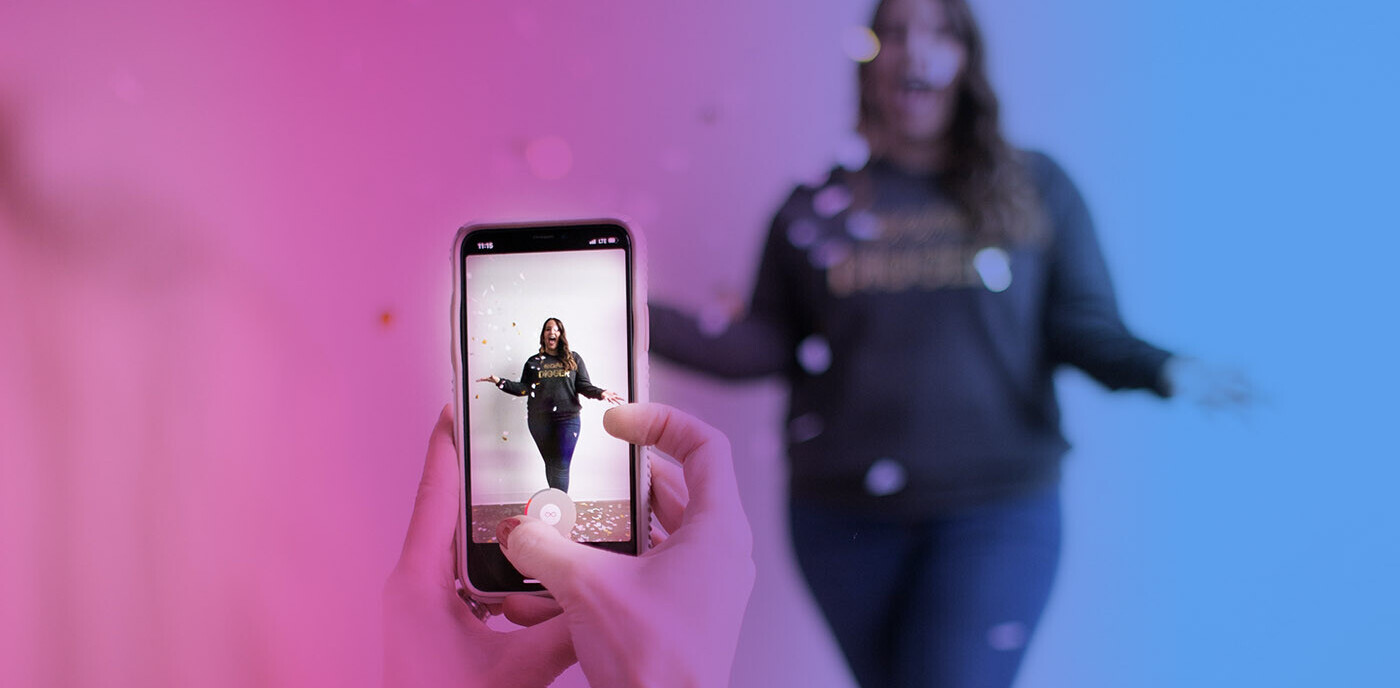
This post originally appeared on the Buffer blog.
Finding the right time to post on social media can be tricky, especially when each different social network has its own audience to think about.
And we’ve written a few different articles here on the Buffer blog that touched on how to come up with the best time to Tweet. And yet, we never quite dedicated a full article to the topic.
There are a few different ways to help us decide what timing we should go for, especially for Twitter, so I wanted to take a look at four ways we can experiment with timing of Tweets. Let’s dive in, here are the four most useful methods we’ve found:
1. The data-driven approach
If I had to suggest just one of these approaches to determining what time is best to Tweet, it’d be this one. Social media timing is so hard to pin down exactly that it definitely pays off to do your own experiments and pay attention to the data about when your audience is most receptive.
You can test this out with a bunch of different tools, but I’m going to use Buffer to show you some examples, since it’s so easy to do within Buffer.
1. Pick four times to test
You can pick any number of times to test, of course, but any more than four would be too much for me to keep track off so I’ll start there.
2. Schedule Tweets for each of these times
To keep the data as consistent as possible without annoying our followers with the exact same Tweet four times a day (we do post the same links multiple times, but we spread them out more), I’m going to post simple Tweets with a headline + a link each time.
3. Examine your analytics to compare
Once these have all posted, I can take a look at Buffer’s analytics the following day and see how the Tweets compare for clicks, favorites and Retweets. Here’s our queue with my posts added:
And here’s an example of what our analytics would look like:
4. Keep testing
There are lots more factors to test if I want to get useful data out of this experiment. Next, I’d keep doing this test on different days of the week, including weekends, and see how the results are affected by the day of the week.
We’ve also seen higher engagement recently with inline images on Twitter, so I’d do a follow-up study to test how Tweets including images perform at different times and on different days.
5. Refine your approach
Once you’ve got some useful data, you can refine your approach based on this. If you’re using Buffer, you can easily update your schedule so that you Tweet at better times based on your research.
Then, you can repeat the process on a regular basis, especially as your content changes and you get more followers, to make sure you’re always Tweeting at the most optimal times.
2. The tools-based approach
There are a number of tools that help you come up with the best times to Tweet. Tweriod is a great example, which lets you run analysis on your own Tweets and those of your followers to see when you should Tweet more often.
Followerwonk is another tool that we love at Buffer. I’m going to give you a run-down of how Followerwonk works and how it integrates into Buffer as an example, but you can obviously use whichever tool suits you best.
To start with, head over to Followerwonk and click on “Analyze followers”
Next, pop your Twitter username into the box and select “analyze their followers” from the drop-down:
You can also choose to analyze the habits of people you follow, but in this case we’re looking for the best timing to reach more of our followers. When your report is done, you’ll see a bunch of graphs to tell you more about where your followers are from, what language they speak and how many followers they have. The really useful one, though, is the one below which shows when your followers are most active:
If you use Buffer, you can take advantage of this by creating a Buffer schedule based on your Followerwonk report. Just choose how many times you want to post each day, and hit the “Schedule at Buffer” button.
I also find the graph of how active I am really useful. As you can see by comparing the two, most of my followers are active when I’m asleep:
Guess I’d better get my Buffer account filled up again!
3. The research-backed approach
Twitter is such a popular network for mobile users that it can be a bit tricky to lock down exactly when the best time to post is. Here are some suggestions from the research I’ve found:
Twitter engagement for brands is 17 percent higher on weekends.
If you’re tweeting from your company account, you might want to keep this in mind, especially if engagement is what you’re looking for. Click-through rates are generally highest on weekends, as well as mid-week, on Wednesdays.
On the other hand, an Argyle Social study showed that weekdays provide 14 percent more engagement than weekends, so this is definitely one you’ll want to test on your audience.
When we look at the time of day, retweets have been shown to be highest around 5pm.
When optimizing for clicks, research from bit.ly showed that 1–3pm is the best time to Tweet.
This study also found that Twitter gets the most traffic from 9am–3pm, which could be good or bad, depending on whether you can get your voice heard amongst the crowd.
Research from KISSmetrics, on the other hand, says noon and 6pm are the best times.
This could be due to lunch breaks and people looking for something to keep them occupied on the commute home after work.
There are lots of Twitter users who primarily use a mobile device—rarely loading up Twitter on their desktops. Twitter did an interesting study of these users and found that they are 181 percent more likely to be on Twitter during their commute.
They’re also 119% more likely to use Twitter during school or work hours.
4. The “What do the Pros do?” approach
Lastly, you can try learning from the habits of others. We’re big fans of this at Buffer, and we try to keep track of what our favorite marketers are doing on Twitter.
If you follow successful people in your industry on Twitter, you can easily get an idea of how often they Tweet and which times lead to more engagement for them.
Guy Kawaksaki is a great example here, as he has some controversial Tweeting habits, but they are certainly working out for him, judging by his massive following.
In particular, Guy is known for posting the same content multiple times, and one reason he advocates doing this is to reach your followers in different time zones. He’s found that this increases the traffic to his content, particularly when Tweeting the same link several times:
The reason for repeated tweets is to maximize traffic and therefore advertising sales. I’ve found that each tweet gets approximately the same amount of clickthroughs. Why get 600 page views when you can get 2,400?
So posting your content in eight-hour intervals like Guy does might be an experiment you can try on your own Twitter account.
Of course, with this one, there’s a big caveat. The followers of people you look up to might be completely different to yours, making this approach less than helpful. But if you discover there is an overlap in followers, you can try copying their approach to see if it works for you.
How do you work out the best times to Tweet? Have you got another suggestion I haven’t included? Let us know in the comments below.
Get the TNW newsletter
Get the most important tech news in your inbox each week.

